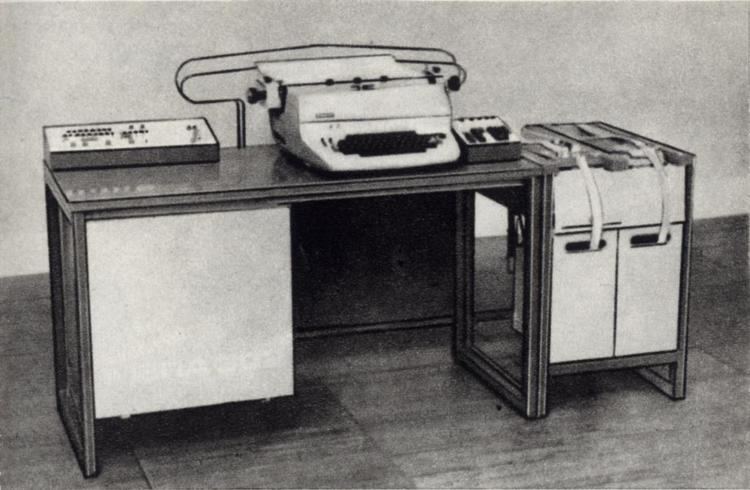MERA 300 was a Polish-built 8-bit minicomputer family. It was first introduced in 1974 at the Poznań Trade Fair and Exhibition.
The MOMIK 8-B (MERA) minicomputer had been designed in Poland in 1973. In 1974 the MERA 300 (MERA ZSM), based on the previous model, was introduced. The same year, at the Poznań International Trade Fair and Exhibition, twelve more models were displayed. MERA 300 was designed by dr. Waldemar Romaniuk and Janusz Popko.
Family of the MERA 300 systems included:
Data processing systems: MERA 300, 301, 302, 303, 304, 305, 306Interactive systems: MERA 342, MERA 344Control systems: MERA 362Universal and special-purpose systems: MERA 392, MERA 396MERA 300 included the next units:
Processors: MOMIK 8b/100 (250 000 instructions/second)Sets of MERA 300 (MERA 302, MERA 303) included:
Central unit with arithmetical unitInternal memory of 8000 8-bit words memory is divided into 32-word pages. Instruction memory could be accessed using an instruction pointer. Data could be addressed using page:word offset.Single-level interrupt system (32 interrupts),Channel multiplexerExternal peripherals:printertypewriterreadercontrol desktopThe MERA 301 used magnetic tapes (PK-1 and PK-2) for data storage with a capacity of 0,5 million characters.
The MERA 305 was an extended version with DMA and a four-level interrupt system, with a total of 128 interrupts (4x32).
The MERA 306 was a more complex, extended version with features including:
Internal memory divided to 4k-word pages, with a maximum of approximately 8, 15, 24 or 32K words of memoryPower-outage protectionReal-time clock (RTC) interfaceHard disk (MERA 9425)In addition to the above, it was possible to attach other devices:
Monitor and keyboardSpecialized keyboardTape memoryMeasuring devices and industrial automation.The computer's machine language consisted of 34 instructions, including arithmetical, logical and control instructions.
Data input devices for the MERA 300 series were:
Tape reader and (CTK 50R) card reader with control unit (JS-CTK 50)CT 1001A tape reader with control unit (JS-CT 1001)CT 2000 tape reader with control unit (JS-CT 2000)Data output devices:
DT 105 tape puncher with control unit JS-DT 105DTK 50 tape and card puncher with control unit JS-DTK 50Other input/output peripherals:
TELETYPE MODEL 390:Printing keyboard inputPrinting data while reading from tape readerPrinting data while punching tapesFACIT 384 typewriterALFA 311/M monitor:Display onscreen informationDisplaying keyboard input while recording data on a tapeofficecollecting datadata processingengineering computationsmeasurement controllingindustrial process controllingOS RTX Real Time eXecutive programBasic system programs:
DDT bootloaderStandard utilitiesMOTIS editorSoftware-emulated instructionsProgramming languages:Machine codeMOTIS assemblerBASICFORTRANIt should be mentioned that the MERA 300 RTX was not necessary while the MOTIS assembler ran, as it was able to work without an operating system.
MERA 300MERA 301MERA 302MERA 303MERA 304MERA 305MERA 306
